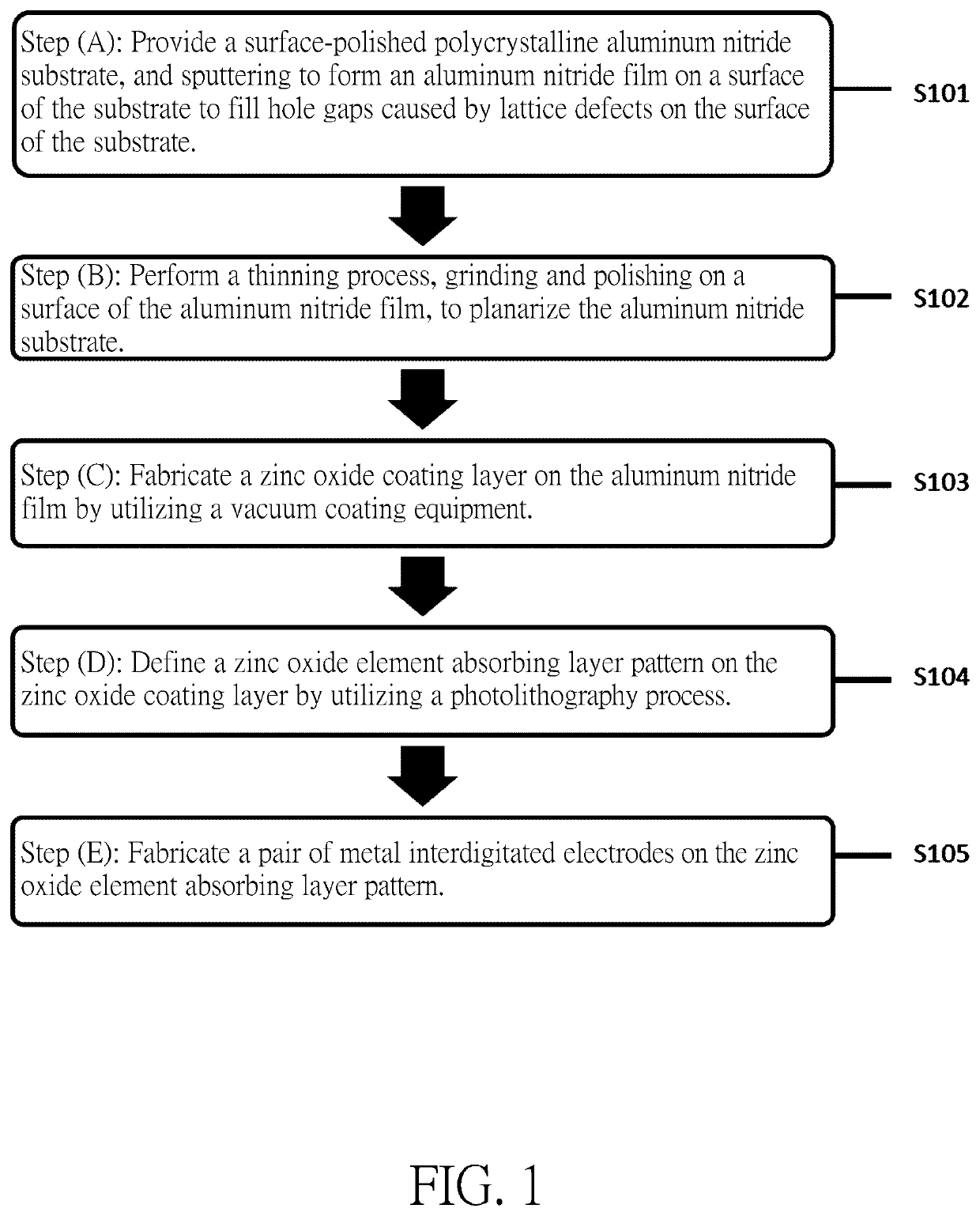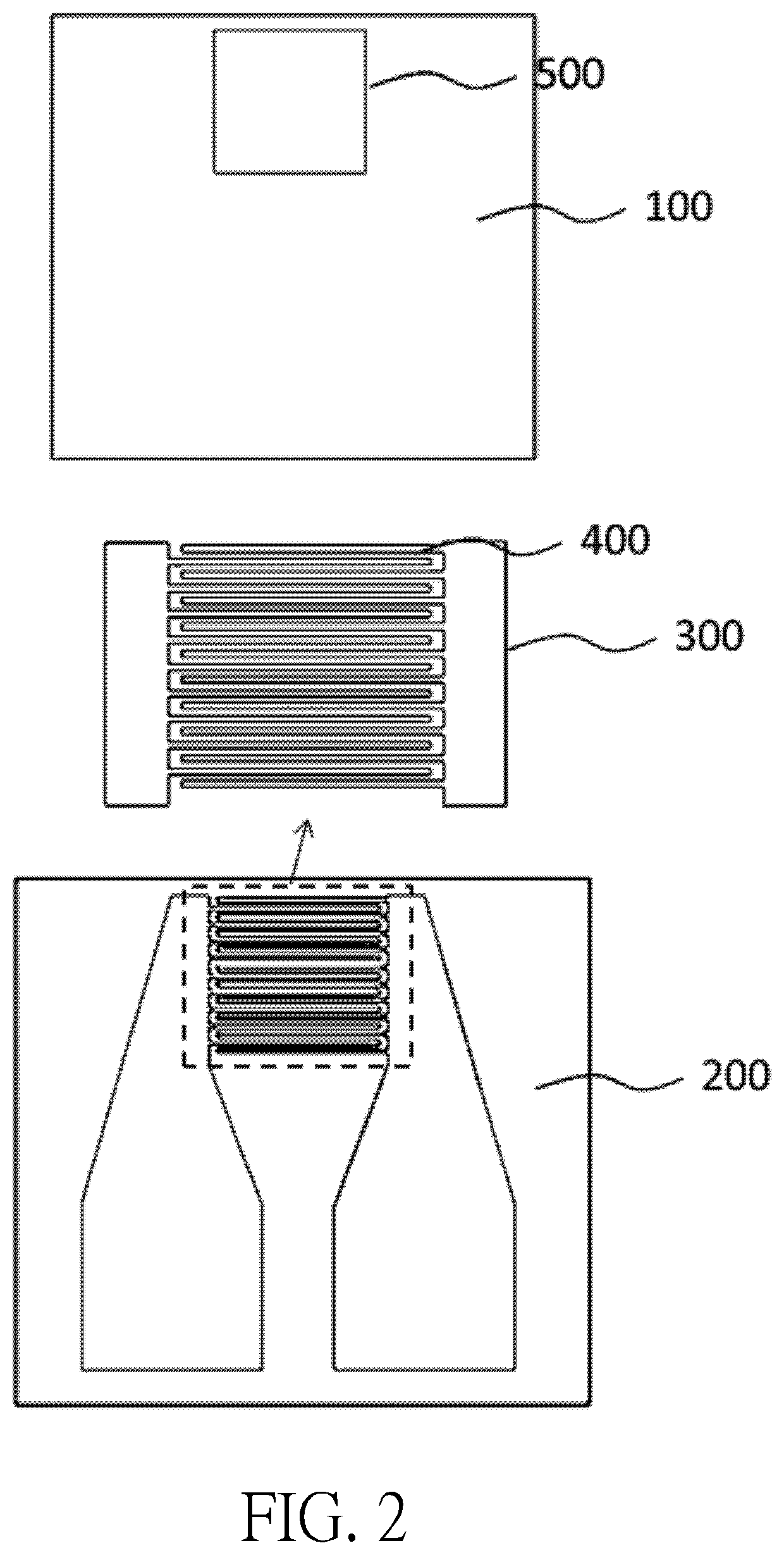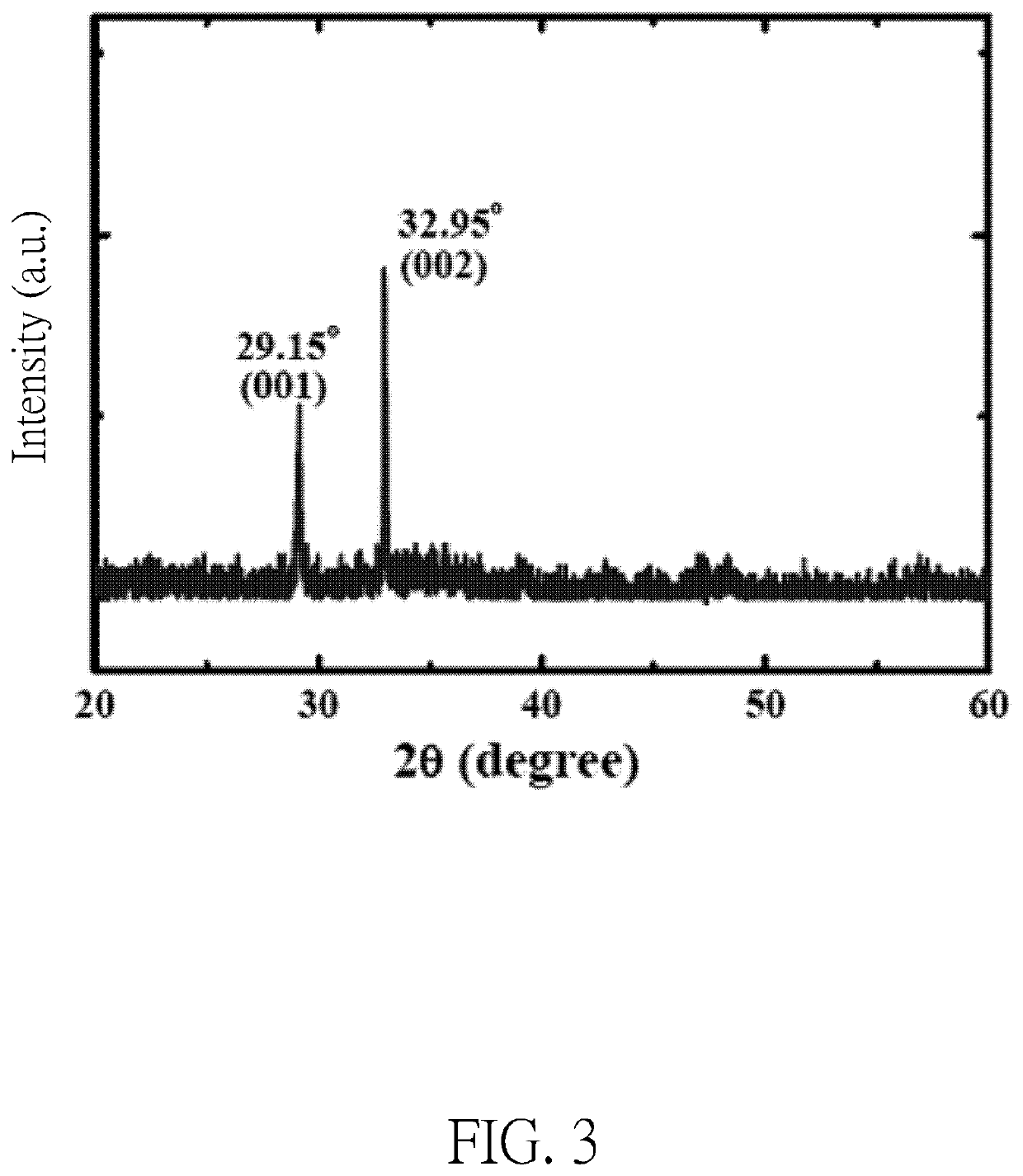Method for preparing aluminum nitride-zinc oxide ultraviolet detecting electrode
a zinc oxide and ultraviolet detecting electrode technology, applied in vacuum evaporation coatings, semiconductor devices, coatings, etc., can solve the problems of affecting the utility reducing the sensitivity of the photoelectrons, and presenting fatigue of the photomultiplier tube, so as to improve the compactness and adhesion of the film, short process time, and increase the kinetic energy of coated molecules
- Summary
- Abstract
- Description
- Claims
- Application Information
AI Technical Summary
Benefits of technology
Problems solved by technology
Method used
Image
Examples
embodiments
[0031]Please refer to FIG. 1, which is a flowchart of a method for preparing an aluminum nitride-zinc oxide ultraviolet light detector according to an embodiment of the present invention. As shown in FIG. 1, a method for preparing an aluminum nitride-zinc oxide ultraviolet light detector includes steps of: (A) providing a surface-polished polycrystalline aluminum nitride substrate, and utilizing a magnetron sputtering equipment to bombard an aluminum target with a plasma formed by nitrogen and argon, to form an aluminum nitride film on a surface of the substrate to fill hole gaps caused by lattice defects on the surface of the substrate (S101); (B) performing a (surface) thinning process, grinding and polishing on a surface of the aluminum nitride film, to planarize the aluminum nitride substrate (S102); (C) fabricating a zinc oxide coating layer on the aluminum nitride film by utilizing a vacuum coating equipment (S103); (D) defining a zinc oxide element absorbing layer pattern on ...
PUM
| Property | Measurement | Unit |
|---|---|---|
| Ra | aaaaa | aaaaa |
| thickness | aaaaa | aaaaa |
| thickness | aaaaa | aaaaa |
Abstract
Description
Claims
Application Information
 Login to View More
Login to View More - R&D
- Intellectual Property
- Life Sciences
- Materials
- Tech Scout
- Unparalleled Data Quality
- Higher Quality Content
- 60% Fewer Hallucinations
Browse by: Latest US Patents, China's latest patents, Technical Efficacy Thesaurus, Application Domain, Technology Topic, Popular Technical Reports.
© 2025 PatSnap. All rights reserved.Legal|Privacy policy|Modern Slavery Act Transparency Statement|Sitemap|About US| Contact US: help@patsnap.com



